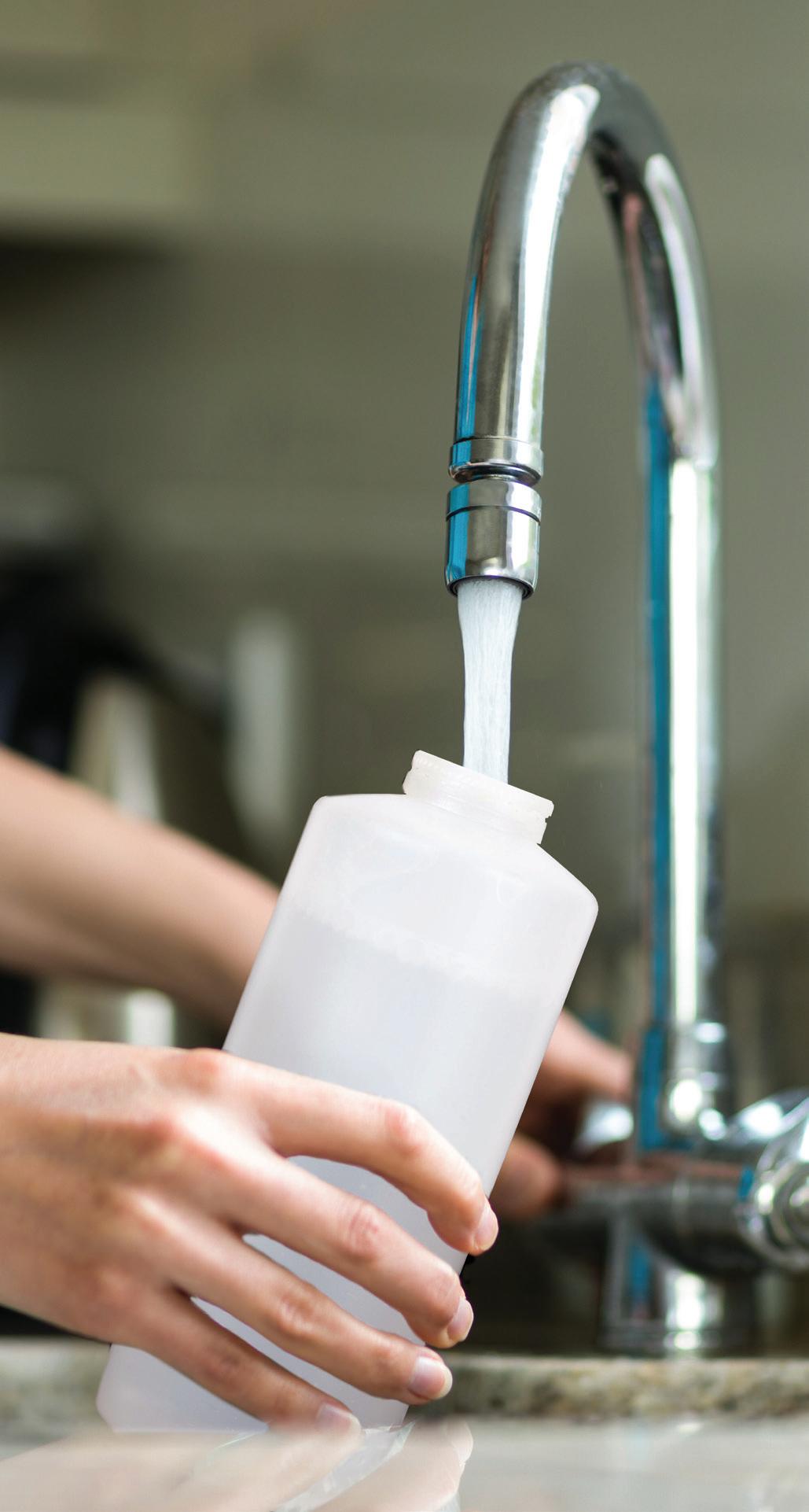
4 minute read
Lead & Copper Rule
In 2018, DWSD began replacing lead service lines with copper, with owner/occupant permission, while on the same street replacing the water main.
Michigan’s Revised Lead & Copper Rule and Detroit’s Test Results
Advertisement
Under Michigan’s revised Lead and Copper Rule, DWSD lead and drinking water testing results have been 10 parts per billion (ppb) in 2019 and 9 ppb in 2020, which are both under the state action level for lead remediation.
Detroit has an estimated 77,197 lead service lines based on a total of 311,000 water service lines. There are 28,922 service lines with unknown pipe material. Since 2018, DWSD has replaced 1,155 lead service lines while on the same street replacing the water main.
All communities with lead service lines must sample tap water in homes with lead service lines as required by EGLE and the EPA. In the summer of 2020, DWSD collected water samples from 51 homes with lead service lines. The 90th percentile of samples was 9 ppb, which is under the action level of 15 ppb. DWSD’s last report of 10 ppb in 2019 was with the same sampling methodology that was required by EGLE beginning in 2019. A water supply exceeds the action level if more than 10 percent of all samples is over the action level.
“We want to reassure Detroiters, especially during the COVID-19 Pandemic, the water supplied by DWSD is safe for drinking,” said Gary Brown, DWSD director. “The water leaving Detroit’s water treatment plants, operated by the Great Lakes Water Authority, does not contain lead. The primary sources of lead in water are lead service lines, lead solder, and/or fixtures containing lead in the home. Even before the State of Michigan enacted the most stringent Lead and Copper Rule in the nation, DWSD began replacing lead service lines at DWSD’s cost with owner/occupant permission during water main replacement projects and providing pitcher filters to those residents and businesses as a precautionary measure. We have replaced more than 1,000 lead service lines since 2018, have 100% resident response rate for replacement when on the street replacing the water main, and our program was recently cited as a model for other communities in the Journal of the American Water Works Association.”
The Chief Public Health Officer for the City of Detroit Denise Fair said, “I am pleased with the results of the lead and copper testing, which have followed stricter guidelines from the state. We know that the presence of lead in decaying paint and dust is the number one source of lead poisoning in children living in homes that were built before 1978. Therefore, we recommend that if you have any concerns regarding lead exposure inside your home – to request a lead test from your child’s primary health care provider or contact the Detroit Health Department.”
The new Michigan Lead and Copper Rule Testing Method
The revised Michigan Lead and Copper Rule enacted in June 2018 – the most stringent in the nation – changed the way lead samples are collected at Detroit homes and all Michigan communities. In the past, DWSD collected only the first liter of water out of the tap. Under the new rule – used in testing in the past two years – both the first and fifth liter are collected. The first liter represents water from household plumbing and fixtures, and the fifth liter is more likely to represent water from the lead service line. The service line is the pipe which brings water from the water main in the street to inside the home or business. In Detroit, most service lines are either lead, copper or galvanized steel. Lead service lines are under two inches in diameter and are mostly at single family or duplex homes and some small businesses. The new sampling technique more accurately represents the range of lead in the drinking water in Detroit homes.
Lead in Drinking Water

The water leaving Detroit water treatment plants, operated by GLWA, does not contain lead, but lead can be released into drinking water from lead service lines and home plumbing as the water moves from the water mains to your tap. Beginning in 1945, Detroit stopped allowing the installation of lead piping for water service lines. Homes before 1945 are most likely to have a lead pipe that connects the home to the water main, known as a lead service line. The lead in lead service lines, household plumbing and fixtures can dissolve or break off into water and end up in tap water. The water provided to DWSD customers contains a corrosion inhibitor to reduce leaching from lead service lines and other lead components, but lead can still be present in water at the tap.
Health Effects of Lead

Lead can cause serious health and development problems. The greatest risk of lead exposure is to infants, young children, and pregnant women. Older homes can have many sources of lead exposure including paint, dust and soil. If you have questions about other sources of lead exposure, please contact the Detroit Health Department at 313-876-0133.








